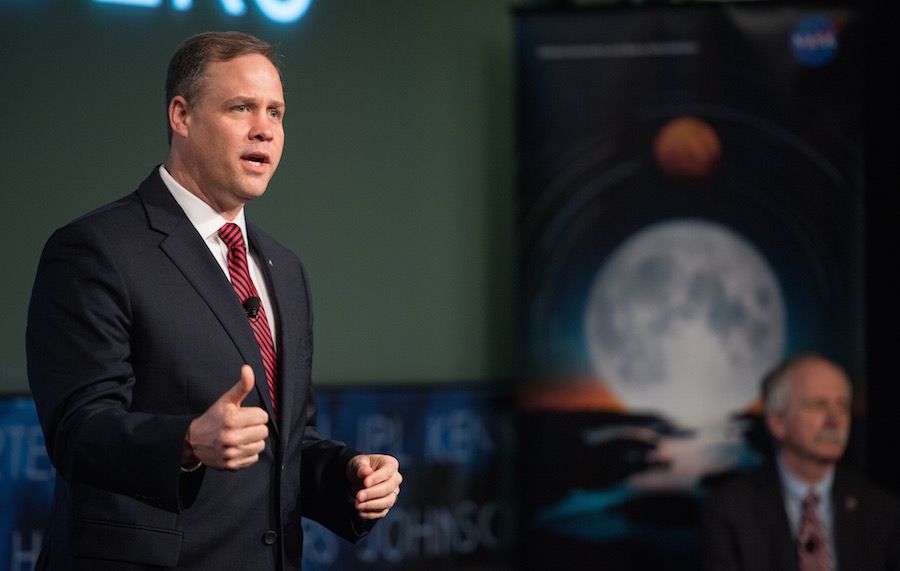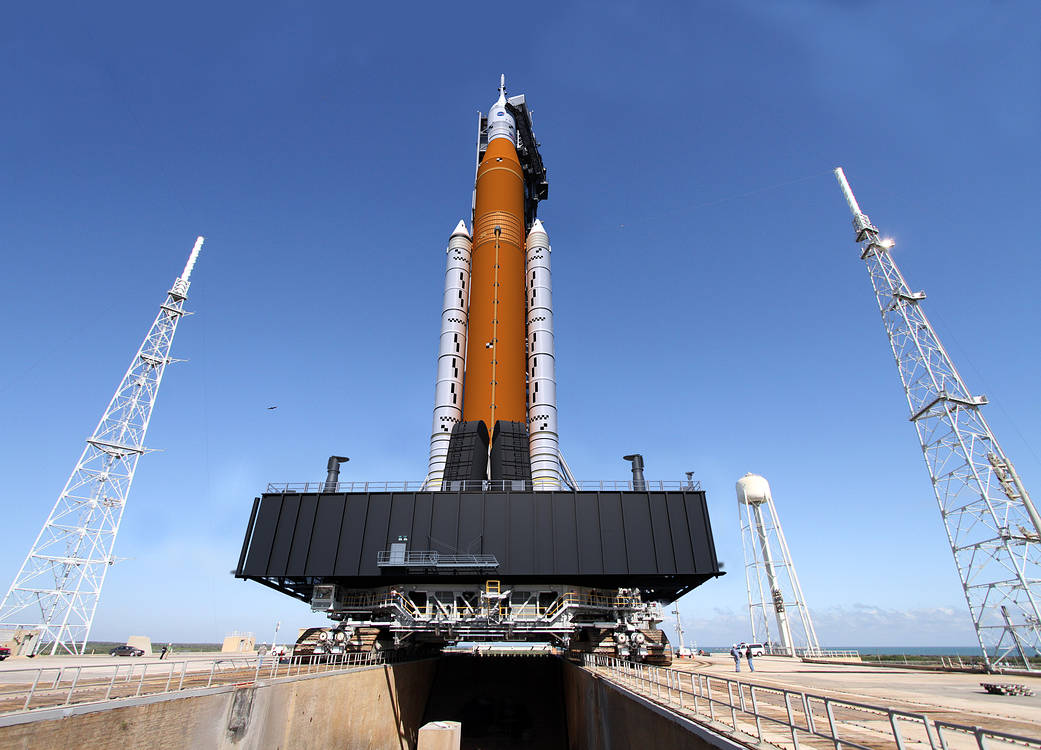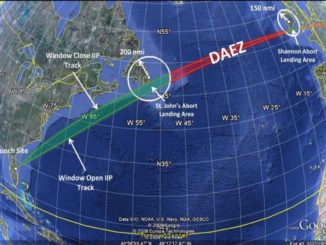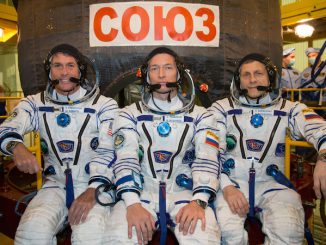STORY WRITTEN FOR CBS NEWS & USED WITH PERMISSION

President Trump’s fiscal 2020 budget request includes $21.02 billion for NASA, funding the agency’s ongoing efforts to develop commercial spacecraft and infrastructure in low-Earth orbit and to press ahead with construction and launch of the world’s most powerful rocket and the Orion crew ships that will carry astronauts back to the moon.
NASA Administrator Jim Bridenstine, speaking to agency workers at the Kennedy Space Center Monday, also said the budget proposal fully funds a mini outpost known as Gateway that will be launched into lunar orbit in the 2020s, along with landers to carry payloads — and eventually astronauts — back to the lunar surface for extended exploration.
Bridenstine said the budget request reflects the priorities of Space Policy Directive 1, signed by President Trump in December 2017, which calls for NASA to encourage the commercialization of low-Earth orbit, including operations aboard the International Space Station, while focusing on long-range plans to retirn to the moon and, eventually, Mars.
If NASA stays on its current course — and if Congress continues its support — astronauts will land on the moon by 2028, according to a budget overview chart.
With the focus solidly on increased commercial operations close to home and a push to return astronauts to the moon, the budget favors human exploration with the agency’s space science budget taking a $600 million hit compared to the 2019 budget.
As such, the budget would provide $1.458 billion for ongoing operations with the International Space Station and $1.828 billion for space transportation, including ongoing development of SpaceX’s commercially developed Crew Dragon and Boeing’s CST-100 Starliner ferry ships.
SpaceX’s Crew Dragon just completed its first unpiloted test flight to the station and Boeing plans to follow suit later this spring. If all goes well, astronauts could begin launching on the Crew Dragon as early as mid summer, eight years after the space shuttle was retired. The first piloted Starliner flights are expected in the fall.
Once one or both spacecraft are declared operational, NASA will be able to end its sole reliance on Russian Soyuz spacecraft to carry astronauts to and from the space station.
“We just saw a SpaceX Crew Dragon dock with the International Space Station, deliver some cargo, ultimately do a lot of tests, undock, fly home and land safely,” Bridenstine said. “That is a first step in a much longer mission for NASA to become one customer of many customers in low-Earth orbit in a robust commercial marketplace.”
The result, Bridenstine hopes, will be “multiple providers competing on cost and innovation.”
“We need to drive down costs, we need to increase access, we need to make spaceflight more available to more people, that includes commercial activities,” he said. “We’re talking about manufacturing, we’re talking about tourism, we’re talking about pharmaceuticals, maybe fiber optics. We need to develop that very robust commercial marketplace in low-Earth orbit.”
With the establishment of private-sector operations near Earth, operations NASA can rely on for the more “routine” aspects of space transportation, the agency will focus on implementing an ambitious deep space exploration program.

The fiscal 2020 budget request includes $3.441 billion to continue development of the gargantuan Space Launch System — SLS — super booster and the Orion crew capsules it will carry to lunar orbit, along with ground systems and software.
“SLS is not reusable, but it is a critical piece of the architecture that enables us to deliver reusability to the moon,” Bridenstine said. “We’re talking about launching Gateway and Orion and the European service module, all of these things are part of a reusable architecture.”
As for SLS, scheduled for its first test flight in 2020 and the program’s first piloted flight in 2022, “we’re talking about a rocket that’s bigger than any rocket that’s ever been built in human history, with a payload fairing capable of carrying volumes that we’ve never seen before, taller than the Statue of Liberty,” he said.
The new rocket will carry “not just astronauts to the moon, but at the same time co-manifested payloads. This is a transformational strategic capability for the United States of America.”
The budget includes $1.580 billion for public-private development of reusable piloted moon landers, Gateway’s solar electric power and propulsion module and other major components enabling astronauts to make short visits starting in 2024.
The budget request maintains NASA’s focus on Mars exploration, fully funding the Mars 2020 rover, which will look for signs of past biological activity on the red planet and store soil and rock samples for return to Earth aboard a future spacecraft.
“This is an amazing capability,” Bridenstine said. “For the first time, we’re going to cache samples of Mars for an eventual return. We’re also going to figure out how do we use the carbon dioxide on Mars to create oxygen that eventually humans will be able to breathe. … Mars 2020 is fully funded in this budget request.”
Other planetary science initiatives include Mars sample return studies and the Europa Clipper, scheduled for launch in 2023 and designed to make multiple flybys of Jupiter’s moon Europa where an icy crust hides a possibly habitable sub-surface ocean.
NASA’s most ambitious — and at $9.66 billion by far the most expensive — space science mission is the James Webb Space Telescope. Years behind schedule because of technical issues and management miscues, the James Webb is undergoing final tests and checkout before a planned launch in 2021. It would receive $352.6 million in the 2019 budget.
“It has been a challenge for me, as your NASA administrator, to go up to the hill and talk about the James Webb Space Telescope,” Bridenstine said. “Some of you might have seen those hearings, and they’re not fun. But I will also tell you this: this administration is committed to the James Webb Space Telescope, and we have bipartisan support.”



